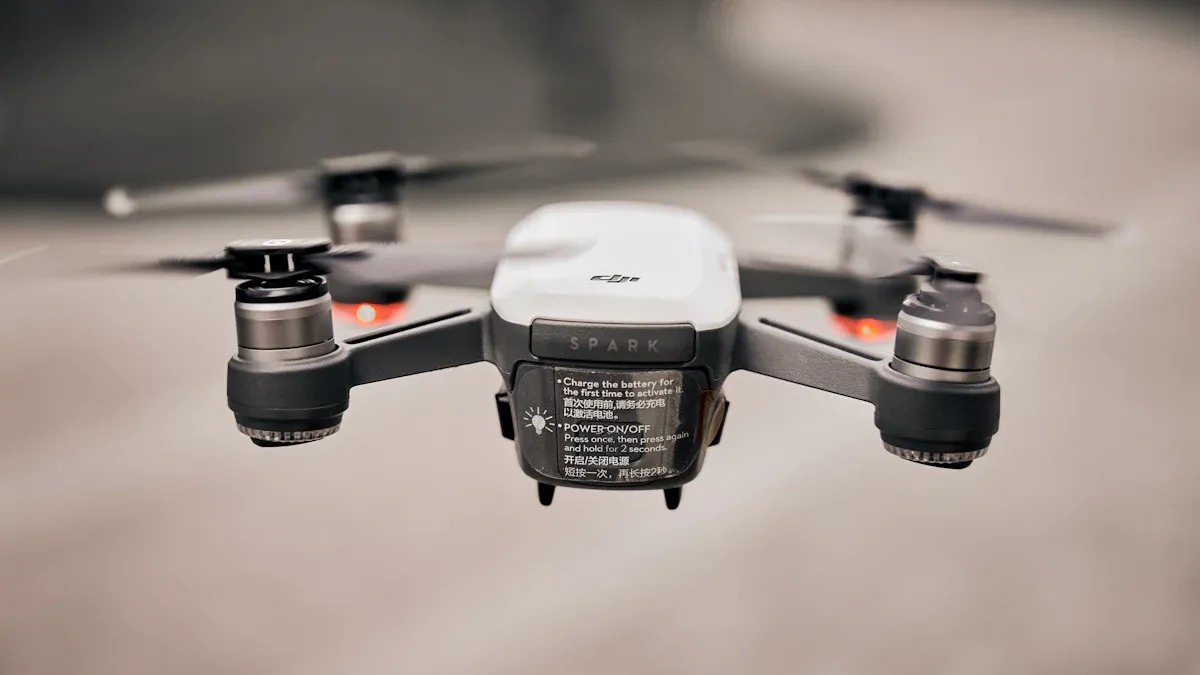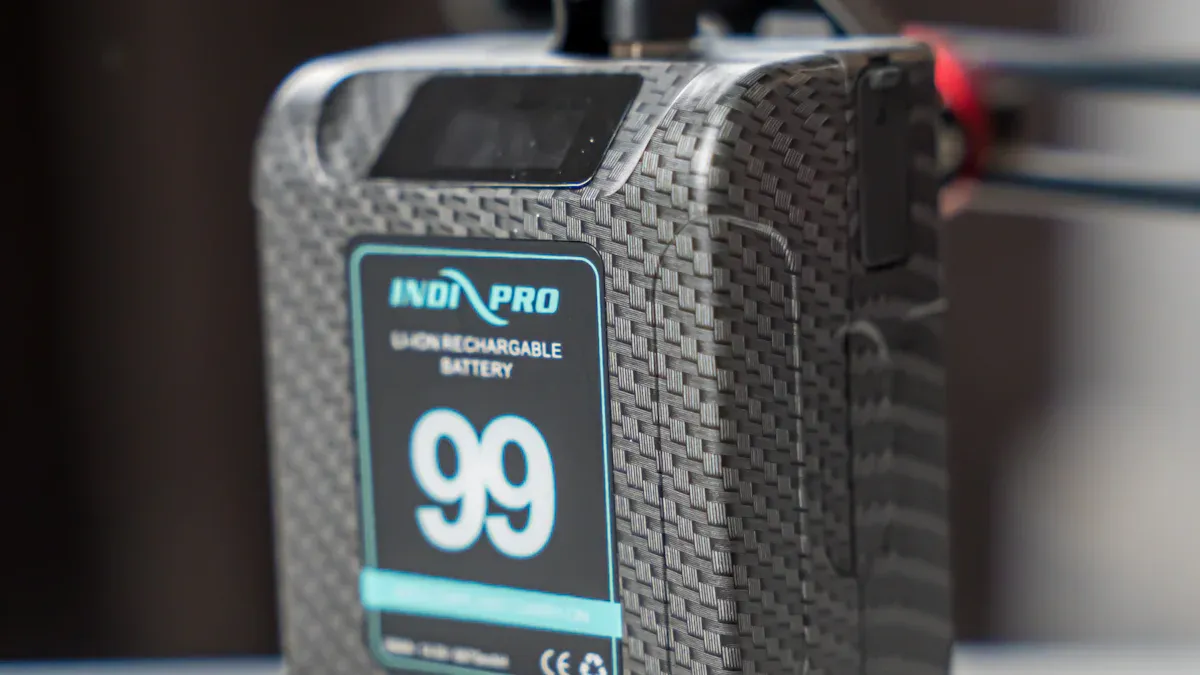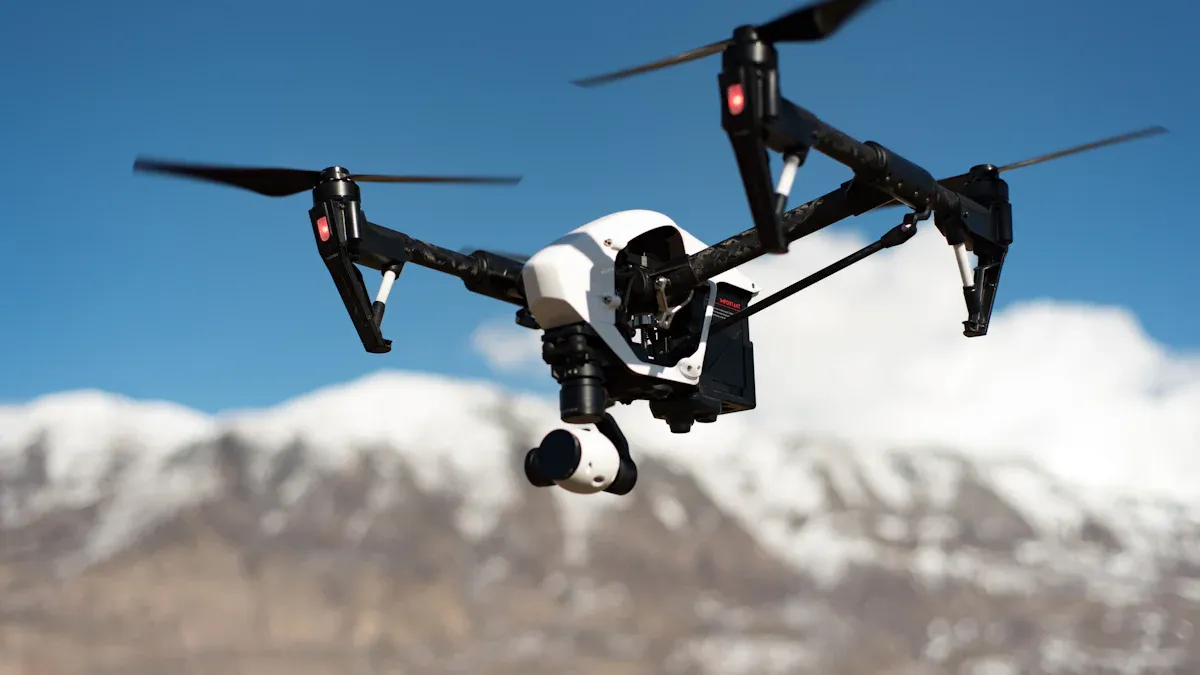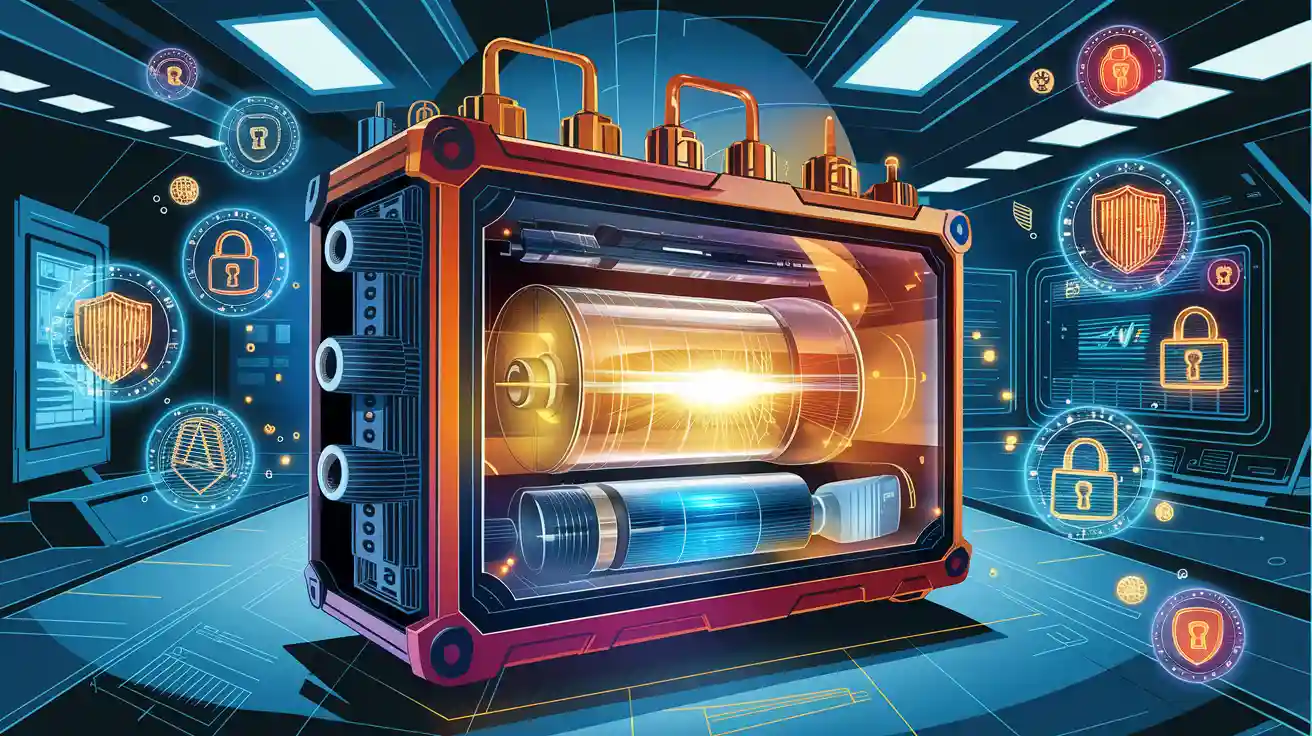Contents

Selecting the right lithium polymer battery packs is essential for maximizing the potential of your RC vehicles and drones. In 2025, advancements in LiPo technology have revolutionized the industry, offering improved reliability and performance. The drone battery market alone is projected to grow from $6.01 billion in 2024 to $7.36 billion in 2025, reflecting a remarkable 22.5% annual growth rate. These innovations provide longer runtimes, higher power output, and enhanced safety features.
The right battery significantly impacts your experience. A proper discharge rate ensures optimal power delivery during demanding maneuvers, while the correct weight and size maintain stability and balance. High-quality LiPo batteries also enhance reliability, making them a vital component for RC enthusiasts and drone pilots alike.
Key Takeaways
Pick the correct voltage and cell count for your RC or drone. This helps it work well and avoids harm.
Match battery size and weight to get the flight time you want. This also helps with easy control.
Use a battery with the right discharge rate (C-rating). This keeps power steady during tough tasks.
Choose good-quality batteries from trusted brands for safety and better performance.
Charge and store batteries properly to make them last longer and stay safe.
Key Factors to Consider When Choosing a LiPo Battery
Voltage and Cell Count
Matching voltage to your RC vehicle or drone’s requirements.
Selecting the correct voltage for your RC vehicle or drone ensures optimal performance and prevents damage to the electronics. Voltage, measured in volts (V), directly impacts the power output of your system. For example, a 7.4V (2S) LiPo battery is suitable for smaller RC cars or drones, while an 11.1V (3S) or higher voltage battery is ideal for high-performance models. Always check your device’s specifications to determine the recommended voltage range.
Understanding the impact of cell count (e.g., 2S, 3S, 4S) on performance.
The cell count in a LiPo battery determines its voltage. Each cell contributes 3.7V, so a 2S battery provides 7.4V, a 3S battery delivers 11.1V, and so on. Higher cell counts result in increased power, which enhances speed and thrust. However, this also generates more heat and requires compatible electronics. Performance testing, such as electrochemical impedance spectroscopy (EIS) and differential capacity analysis (DCA), reveals how voltage and cell count affect battery efficiency and longevity under real-world conditions.
Capacity (mAh)
How capacity affects runtime and weight.
Battery capacity, measured in milliampere-hours (mAh), determines how long your RC vehicle or drone can operate before recharging. Higher capacity extends runtime but adds weight, which may affect maneuverability. For instance, a 2200mAh battery offers 15-20 minutes of flight time and weighs around 200g, while a 6000mAh battery can last up to an hour but weighs significantly more. Balancing capacity and weight is crucial for achieving the desired performance.
Battery Capacity (mAh) | Flight Time (minutes) | Weight (g) |
|---|---|---|
1000 – 2200 | 15 – 20 | 150 – 250 |
3000 – 6000 | 30 – 60 | 400 – 600 |
8000+ | 60+ | N/A |
Balancing capacity with your specific use case.
Consider your application when choosing battery capacity. For racing drones, prioritize lightweight batteries with moderate capacity to maintain agility. For aerial photography, opt for high-capacity batteries to maximize flight time. Products like Large Power’s high-capacity LiPo batteries offer excellent runtime without compromising reliability, making them a top choice for various RC applications.
Discharge Rate (C-rating)
Importance of C-rating for power delivery.
The discharge rate, or C-rating, indicates how quickly a battery can deliver power. A higher C-rating ensures sufficient power for demanding tasks like rapid acceleration or lifting heavy payloads. For example, a 50C battery can deliver 50 times its capacity in amps, providing instant power when needed. This is critical for high-performance RC vehicles and drones.
Choosing the right C-rating for high-performance applications.
Selecting a high C-rating battery ensures consistent power delivery during intense usage. However, higher C-ratings may reduce efficiency and generate more heat. Performance graphs show how discharge rates affect power delivery, with faster discharge times at higher C-rates. For instance:
C Rate | Discharge Time | Performance Notes |
|---|---|---|
1C | 1 hour | Standard discharge time |
0.5C | 2 hours | Slower discharge rate |
2C | 30 minutes | Faster discharge rate |
30C | Very fast | Efficiency drops, heat generation increases |
When selecting a battery, ensure the C-rating matches your device’s power requirements. Large Power’s LiPo batteries, known for their high C-rating, deliver exceptional performance for demanding RC and drone applications.
Weight and Size
Ensuring compatibility with your RC vehicle or drone.
The weight and size of a LiPo battery play a crucial role in maintaining the balance and performance of your RC vehicle or drone. A battery that is too heavy or large can disrupt the center of gravity, leading to poor handling and reduced stability. Smaller RC aircraft, for instance, require lightweight and compact batteries to ensure optimal balance and fit within the limited space available. Proper battery placement is equally important for even weight distribution, which directly impacts aerodynamics and maneuverability.
Larger RC models offer more flexibility in battery size but still demand careful consideration. A poorly chosen battery can affect the overall design and efficiency of the aircraft. For example, a battery constituting up to 65% of the total weight can significantly reduce flight times and performance. Always verify the dimensions and weight of the battery to ensure compatibility with your specific RC model.
Trade-offs between battery size and performance.
Choosing the right battery involves balancing size and performance. Larger batteries often provide higher capacity, extending runtime. However, they add weight, which can negatively impact speed, agility, and stability. Smaller batteries, while lighter, may offer shorter runtimes, requiring frequent recharges.
Challenge | Description |
|---|---|
Weight | Batteries can constitute up to 65% of the total weight, affecting performance. |
Charge Cycles | Batteries degrade after 200-300 cycles, reducing capacity and efficiency. |
Size | Larger batteries can impact balance and stability, affecting aerodynamics. |
To achieve the best results, consider your specific use case. For racing drones, prioritize lightweight batteries to maintain agility. For aerial photography, opt for larger batteries to maximize flight time. Products like Large Power’s lithium polymer batteries strike an excellent balance between size, weight, and capacity, making them ideal for various RC applications.
Battery Quality and Brand Reputation
Why quality matters for safety and longevity.
Battery quality directly impacts safety, longevity, and overall performance. High-quality LiPo batteries undergo rigorous testing to ensure they can withstand real-world conditions. For example, Consumer Reports evaluates batteries by simulating extreme environments, charging and discharging them thousands of times under high and low temperatures. This process ensures that the batteries perform reliably over time, reducing the risk of malfunctions or accidents.
Investing in a high-quality battery also extends its lifespan. While most LiPo batteries degrade after 200-300 charge cycles, premium options maintain their capacity and efficiency for longer periods. This not only saves you money in the long run but also enhances the reliability of your RC vehicle or drone.
Recommended brands and manufacturers in 2025.
In 2025, several brands stand out for their exceptional LiPo batteries. Large Power, for instance, offers a wide range of lithium polymer batteries known for their high capacity, durability, and consistent performance. Their products cater to both hobbyists and professionals, ensuring compatibility with various RC models and drones. Other reputable manufacturers include Enerforce and Tattu, both of which are recognized for their commitment to quality and innovation.
When selecting a battery, prioritize brands with a proven track record. Look for manufacturers that provide detailed specifications and adhere to industry standards. This ensures you receive a product that meets your performance needs while maintaining safety and reliability.
Top-Rated Lithium Polymer Battery Packs for RC Vehicles and Drones in 2025

Best for Long Flight Times
Large Power High Capacity LiPo Batteries – Specifications, pros, and cons.
Large Power’s high-capacity lithium polymer battery packs are designed to deliver exceptional flight duration, making them ideal for aerial photography and extended RC adventures. These batteries feature capacities ranging from 3000mAh to over 6000mAh, ensuring you can achieve flight times of 30 to 60 minutes or more, depending on your drone or RC model. Their high energy output and consistent power delivery make them a top choice for enthusiasts seeking reliability.
Specifications:
Capacity: 3000mAh to 6000mAh+
Voltage: 7.4V (2S) to 22.2V (6S)
C-rating: 25C to 50C
Weight: Varies by model, typically 400g to 600g
Pros:
Extended flight duration for long missions.
High discharge rates for demanding applications.
Durable construction for repeated use.
Cons:
Heavier weight may affect smaller RC models.
Higher cost compared to standard LiPo batteries.
We are available for any type of custom lipo battery inquiry, contact us for more details!
Best for Durability and Longevity
Enerforce 4S 2200mAh 50C LiPo Battery – Specifications, pros, and cons.
The Enerforce 4S 2200mAh 50C LiPo battery is a robust option for high-performance RC applications. Its high C-rating ensures rapid power delivery, making it perfect for aerobatics and racing. Despite its compact size, this battery delivers reliable performance and durability.
Specifications:
Capacity: 2200mAh
Voltage: 14.8V (4S)
C-rating: 50C
Weight: 250g
Pros:
High discharge rate for demanding tasks.
Compact and lightweight design.
Durable construction for repeated use.
Cons:
Limited flight duration due to lower capacity.
Best suited for high-performance rather than long-duration applications.
Choosing the right lithium polymer battery packs depends on your specific needs. For extended flight duration, prioritize high-capacity options like Large Power’s batteries. For durability, consider models with proven longevity, such as the Enerforce 4S 2200mAh.
Safety Tips for Using LiPo Batteries

Proper Charging Techniques
Using a quality LiPo charger.
Using a high-quality charger designed specifically for lithium polymer batteries is essential for maintaining battery safety and performance. A LiPo charger with intelligent charging logic ensures the correct voltage and current are applied during the charging process. This prevents overcharging, which can lead to overheating or even fire. Always charge your battery at a rate between C/4 and C/2 to balance efficiency and longevity. For example, a 2200mAh battery should be charged at a rate of 0.55A to 1.1A. Avoid using generic chargers, as they may not provide the precise control required for LiPo batteries.
Avoiding overcharging and undercharging.
Overcharging a LiPo battery can cause it to swell, leak, or even explode. Undercharging, on the other hand, reduces the battery’s capacity and lifespan. To avoid these issues, monitor the voltage during charging and ensure it stays within the manufacturer’s specified range. Most LiPo chargers include safety features like automatic cutoffs to prevent overcharging. Always follow the guidelines provided by the manufacturer to ensure safe charging practices.
Storage Guidelines
Storing batteries at the correct voltage.
Proper storage of LiPo batteries involves maintaining them at a safe voltage level, typically around 3.7V per cell. This prevents over-discharge or overcharge during storage, which can degrade the battery. Store your batteries in a cool, dry, and well-ventilated area to minimize the risk of overheating or corrosion.
Guideline | Description |
|---|---|
Storage Conditions | Batteries must be stored in a cool, dry, and well-ventilated area. |
Fire Safety | Use fireproof containers and keep the area free from combustible materials. |
Corrosion Prevention | Cool and dry environments reduce corrosion and extend battery lifespan. |
Keeping batteries in a fireproof container.
LiPo batteries can become volatile if damaged or improperly stored. Always use a fireproof container, such as a LiPo safety bag, to store your batteries. This minimizes the risk of fire in case of a thermal runaway event. Additionally, keep the storage area equipped with fire extinguishing equipment for added safety.
Handling Precautions
Avoiding physical damage to the battery.
Physical damage to a LiPo battery can compromise its integrity and lead to dangerous situations. Avoid dropping, puncturing, or disassembling the battery. Mishandling can cause internal short circuits, leading to swelling or even combustion. Always handle your battery with care and use a non-conductive, non-combustible surface when working with it.
Recognizing signs of a damaged or unsafe battery.
Inspect your battery before each use. Look for signs of damage such as bulging, hissing, leaking, or smoking. If you notice any of these, do not use the battery. Dispose of it following proper guidelines. Using a damaged battery can lead to serious safety hazards, including fire or explosion. Always prioritize safety by following manufacturer recommendations and using approved chargers.
Tip: Large Power offers a range of high-quality LiPo batteries designed with safety and durability in mind. Explore their products here to find reliable options for your RC vehicles and drones.
Maintenance and Longevity Tips
Best Practices for Usage
Avoiding deep discharges to extend battery life.
To maximize the lifespan of your lithium polymer battery, avoid deep discharges whenever possible. Draining the battery below 25% can significantly reduce its capacity and overall performance. For instance, fully discharging a battery can lead to a 20%-25% loss in capacity, while keeping it above 25% minimizes degradation. Recharge your battery promptly when it reaches this threshold to maintain its health.
Discharge Level | Capacity Loss |
|---|---|
25% | 0% |
50% | 5%-10% |
75% | 15%-20% |
100% | 20%-25% |
This table highlights the importance of avoiding deep discharges to preserve your battery’s efficiency and longevity.
Allowing batteries to cool before recharging.
Recharging a hot battery can accelerate wear and reduce its lifespan. Always allow your battery to cool down after use, especially following high-demand activities like racing or aerial photography. Cooling systems, such as fans or shaded storage areas, can help regulate temperature effectively. This practice ensures optimal performance and prevents overheating during the charging process.
Proper Storage Techniques
Storing batteries at room temperature.
Proper storage conditions are essential for maintaining your battery’s integrity. Store your battery in a cool, shaded area with consistent room temperature. Avoid exposing it to extreme heat or cold, as temperature fluctuations can degrade its performance. Designated storage spaces, such as closets, are ideal for regulating temperature and ensuring long-term reliability.
Periodically checking and balancing cells during long-term storage.
During extended storage periods, periodically check your battery’s voltage and balance its cells to prevent uneven wear. Use a battery checker to monitor cell health and ensure all cells remain within the recommended voltage range. Regular inspections, including visual examinations for damage, help maintain the battery’s condition and prevent unexpected failures.
Monitoring Battery Health
Using a battery checker to monitor voltage and cell balance.
A battery checker is an invaluable tool for monitoring your battery’s health. It measures key metrics like voltage, capacity, and cell balance, providing insights into its performance. For example, open circuit voltage (OCV) reflects the battery’s state of charge, while differential capacity analysis identifies signs of degradation. Regular monitoring helps you address issues early and maintain optimal performance.
Testing Method | Description |
|---|---|
Cycle life | Measures the longevity and durability of the battery over repeated charge and discharge cycles. |
Capacity and charge retention | Assesses how much energy the battery can store and how well it retains that energy over time. |
Open Circuit Voltage (OCV) | Indicates the voltage of the battery when not connected to any load, reflecting its state of charge. |
Differential Capacity Analysis | Identifies degradation mechanisms over time, ensuring timely maintenance. |
Replacing batteries when performance declines significantly.
Replace your battery when you notice a significant decline in performance. Indicators include reduced capacity, increased internal resistance, or a noticeable voltage drop. These signs suggest the battery has reached the end of its useful life. Investing in a high-quality replacement, such as those offered by Large Power, ensures consistent performance and safety for your RC vehicles and drones.
Tip: Explore Large Power’s range of lithium polymer batteries here for reliable and durable options tailored to your needs.
Choosing the right lithium polymer battery is essential for enhancing the performance, safety, and longevity of your RC vehicles and drones. By selecting a battery with the correct voltage, capacity, and discharge rate, you ensure optimal power delivery and extended runtime. Reputable manufacturers, such as Large Power, provide high-quality options that meet safety standards and deliver consistent results.
Following proper safety and maintenance practices further extends the lifespan of your battery. Avoiding full discharges, storing batteries at safe voltage levels, and using fireproof containers reduce risks and improve reliability. These steps not only protect your equipment but also maximize the value of your investment.
Explore the recommended lithium polymer batteries from trusted brands like Large Power to find the perfect match for your needs. Share your experiences and insights in the comments to help others make informed decisions.
FAQ
What is the best way to store a lithium polymer battery?
Store your battery in a cool, dry place at room temperature. Maintain a charge level of around 50% to 70% for long-term storage. Use a fireproof container, such as a LiPo safety bag, to minimize risks. Avoid exposing the battery to extreme temperatures or direct sunlight.
How do you know when a lithium polymer battery needs replacement?
Replace your battery if you notice reduced capacity, swelling, or a significant drop in performance. Use a battery checker to monitor voltage and cell balance. If the battery shows signs of damage, such as leaking or bulging, discontinue use immediately for safety.
Can you use any charger for lithium polymer batteries?
No, always use a charger specifically designed for lithium polymer batteries. These chargers regulate voltage and current to prevent overcharging or undercharging. Using an incompatible charger can damage the battery or create safety hazards. Large Power offers reliable chargers for their lithium polymer batteries.
How can you extend the lifespan of your lithium polymer battery?
Avoid deep discharges and recharge the battery before it drops below 25% capacity. Allow the battery to cool after use before recharging. Store it at the correct voltage and periodically check cell balance during long-term storage. Proper handling ensures better performance and longevity.
Are lithium polymer batteries safe for beginners?
Yes, lithium polymer batteries are safe if you follow proper usage and storage guidelines. Use a quality charger, avoid physical damage, and store the battery in a fireproof container. Large Power provides high-quality batteries with enhanced safety features, making them suitable for all users.





